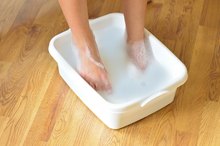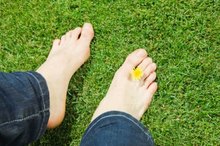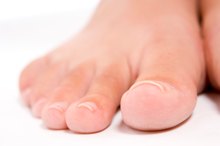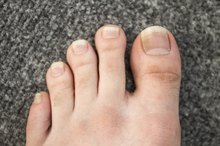What does fact checked mean?
At Healthfully, we strive to deliver objective content that is accurate and up-to-date. Our team periodically reviews articles in order to ensure content quality. The sources cited below consist of evidence from peer-reviewed journals, prominent medical organizations, academic associations, and government data.
The information contained on this site is for informational purposes only, and should not be used as a substitute for the advice of a professional health care provider. Please check with the appropriate physician regarding health questions and concerns. Although we strive to deliver accurate and up-to-date information, no guarantee to that effect is made.
How to Care for the Skin Once a Nail Falls Off
Repeated fungal infections of your nails or ingrown nails can require removal of the nail as a last resort of treatment. Also, crushing your nail can cause it to fall off, and some diseases, such as kidney, thyroid and liver disease, can cause you to lose a nail. Once a nail falls off or a doctor removes it, exposure of the nail bed increases your risk of infection. Take precautions to avoid infection while letting the nail grow back, which could take up to a year.
Keep your foot or hand elevated for at least 24 hours after the nail comes off.
How to Treat an Ingrown Fingernail
Learn More
Clean the area with a medicated antibacterial soap. Do not use a wrap or sponge. Gently clean it with your fingers and then carefully pour clean water over the area to rinse it.
Apply topical antibiotic creams or antifungal creams to your skin. Loosely bandage the area to avoid putting pressure on the skin.
How to Treat Lifted Toenails
Learn More
Keep the bandage on the area until your doctor advises you to remove it. This reduces your risk of infection.
Wear open-toed shoes. This keeps pressure off the area and enables a new nail to begin to grow 5.
Take oral antibiotics and possibly pain medicines as directed by a doctor. The antibiotics help fight infection. Having a nail removed or come off and exposing the nail bed is painful, so over-the-counter or prescription pain medicine may help you manage the pain through the initial healing period.
Avoid activities that could cause you to injure the nail bed or emergent new nail until the new nail has fully grown in.
Related Articles
References
- Drugs.com: Toenail/Fingernail Removal -- What You Should Know
- Drugs.com: Toenail/Fingernail Removal -- What Is It?
- American Academy of Orthopaedic Surgeons; Ingrown Toenails; April 2006
- Mayo Clinic; Nail Fungus Treatment and Drugs; September 2010
- “The New York Times”; Nail Abnormalities; April 2007
- Merck Manual Professional Version. Onychomycosis. Updated August 2019.
- Richardson M. Selecting a treatment option in subungual haematoma management. Nurs Times. 2004;100(46):59, 61, 63.
- MyHealth Alberta.ca. Toenail or fingernail avulsion: Care instructions.
Writer Bio
Cecilia Harsch has been writing professionally since 2009. She writes mainly home improvement, health and travel articles for various online publications. She has several years of experience in the home-improvement industry, focusing on gardening, and a background in group exercise instruction. Harsch received her Certified Nurses Assistant license in 2004. She attended Tarrant County College and studied English composition.







